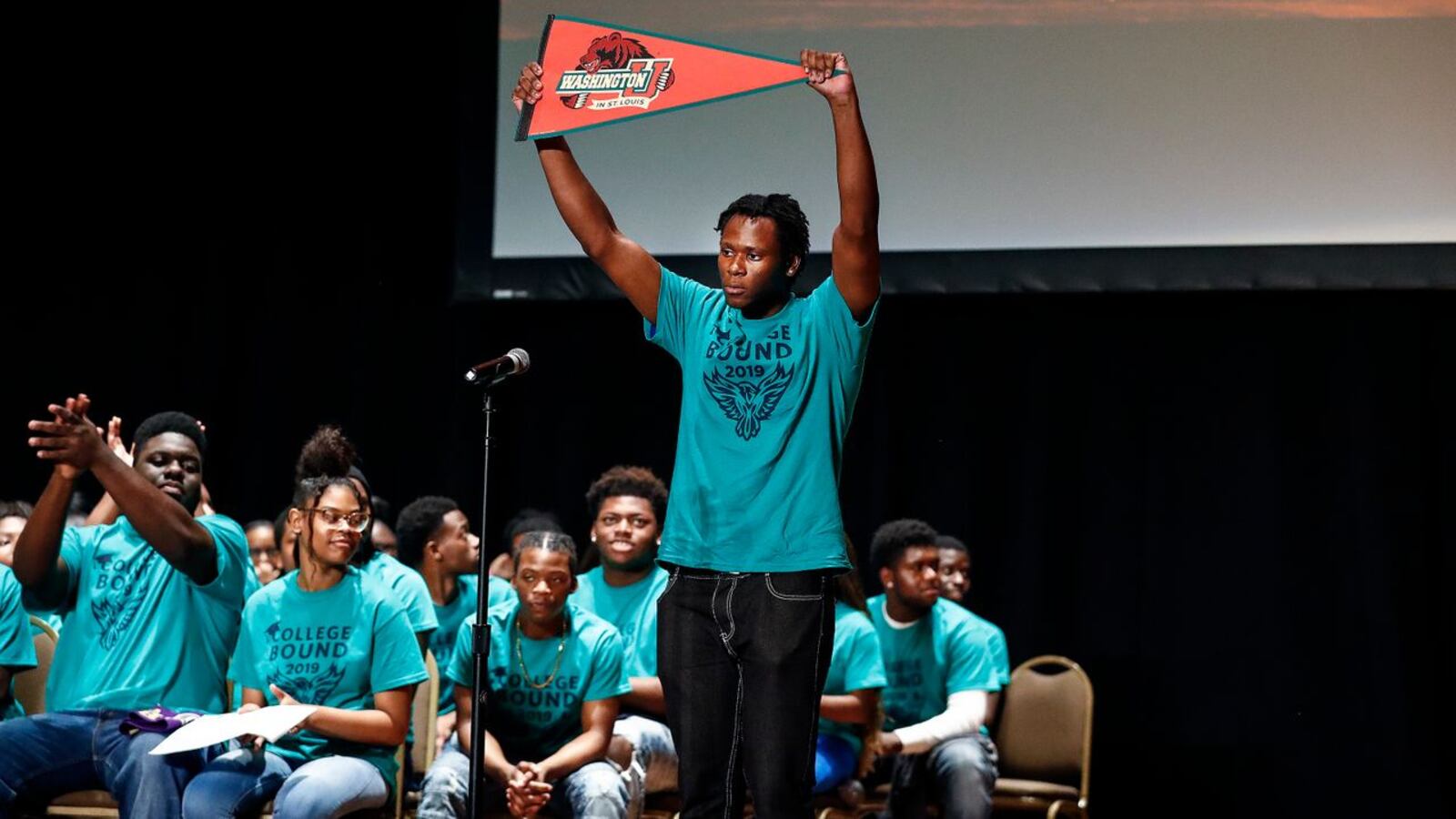When Shannon Binns was navigating the college admissions process, she had a sounding board hundreds of miles away from her small hometown in Northeast Ohio.
That was Tally Erickson, a recent Swarthmore graduate who served as a virtual college counselor as part of CollegePoint, an ambitious initiative designed to push high-achievers from low- and middle-income families into better colleges.
“She was like the friend I needed to give me real advice, someone who actually understands how the process works, unlike pretty much everybody else in my life,” said Binns. “It was a really amazing thing.” She’s now a freshman at Columbia University, and says she probably wouldn’t have ended up there without Erickson’s help.
The experience paid off for Binns. Has it helped others?
Preliminary new research offers evidence that such virtual advising can change where students enroll in college — but only very slightly.
According to one study, students with access to CollegePoint were nearly 3 percentage points more likely to enroll in a college with a graduation rate over 70%. Another found that participating students were 1.5 percentage points more likely to go to a school rated as highly selective by Barron’s, though the schools weren’t any better by some other measures, including average SAT scores and graduation rates.
Neither study found that CollegePoint affected eligible students’ overall likelihood of going to college, which was high for such students regardless.
“They both suggest, in my view, a similar magnitude of effect,” said Ben Castleman, a researcher on the second paper and a University of Virginia professor. “And that’s a modest effect overall.”
It’s an early verdict on a program that has benefitted from major philanthropic support at a moment when more attention is being paid to making sure low-income students who get to college actually earn a degree. It was catalyzed in part by an influential 2012 study describing a “hidden supply of high-achieving low-income” students who are qualified for — but often don’t apply to — top colleges.
Bloomberg Philanthropies, which launched CollegePoint in 2014 alongside America Achieves, has pledged a combined $60 million over several years to CollegePoint and the American Talent Initiative, a consortium of colleges with graduation rates over 70%. (Bloomberg Philanthropies is a funder of Chalkbeat.)
“We are very pleased with the results that we see,” said Jenny Kane of Bloomberg Philanthropies, who noted that the research is ongoing.
CollegePoint is free for those eligible, but costs about $350 per student to run. College advisors communicate with their advisees via text, email, phone, and video chat, helping them decide where to apply, put together application essays, and understand the financial aid process. The advisors encourage students to consider colleges with high graduation rates.
Some of the advisors are full-time recent college graduates, whereas others are volunteer part-time college students and graduates. CollegePoint partners with four nonprofits to administer the program.
Students are eligible if they score at the 90th percentile of the SAT or ACT, have a high school GPA of at least 3.5, and report an annual family income of less than $80,000.
Those criteria, particularly the test score requirements, shape the pool of students who have access to the program. Black students made up just 8 percent of participating students in one study and 5 percent in the other, far below their share of the U.S. school-age population. Hispanic students were also slightly under-represented, while Asian students were substantially over-represented.
“Clearly those numbers are not what they should be or what they hope they would be for under-represented minorities,” said Bryden Sweeney-Taylor, who works on CollegePoint through America Achieves.
These disparities mirror those seen in the prior research on high-achieving low-income students — just 6 percent of whom were black. CollegePoint used similar criteria to identify eligible students. (Notably, though, among students deemed eligible, black and Hispanic students were slightly more likely to actually participate.)
Kane of Bloomberg Philanthropies said there are no imminent plans to change the eligibility criteria, but that that might be considered in the longer term.
The latest research also offers some insights into how the program might be made more effective.
The effects were larger for students of color when their advisor was also a person of color, according to one of the studies. And a third paper found that when CollegePoint offered a $400 incentive to students who applied to at least four selective colleges, the share of students enrolling in a high-graduation school was 2.6 percentage points higher than the students only offered virtual advising.
It’s too soon to say whether CollegePoint will achieve a key part of its goal — get students to graduate. Some recent research has found that even in instances where a program affects students’ chances of attending college, students aren’t more likely to actually complete a degree.
Still, the papers add to a growing body of knowledge about what kinds of programs can change students’ college trajectories.
A number of studies have shown that pricey initiatives — like generous scholarship programs, intensive in-person high school advising, and in-college academic and social support — can make a big difference. Traditional college counselors employed by schools make a difference, too, but they often face caseloads far larger than what is recommended — a fact that has gotten less philanthropic attention.
On the other hand, recent studies on narrower programs designed to “nudge” students into making different decisions have come to disappointing conclusions.
CollegePoint lands somewhere in the middle of the two approaches. Castleman, who is continuing his evaluation of the program, says he is still optimistic. “Their theory of action is built around a sustained individualized personal advising relationship,” he said. “I hold out the belief that that kind of model has the potential for a larger impact.”


